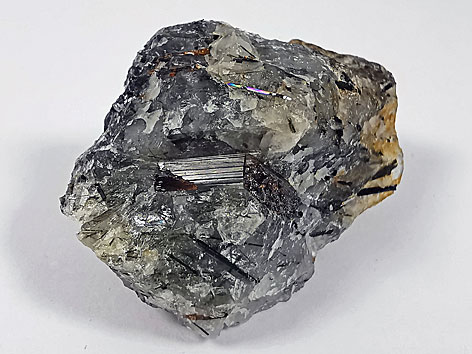
Shcherbakovit
xx neben Aegirin xx in Matrix
Mt. Rasvumchorr, Chibiny, Kola-Halbinsel, Murmansk, Russland (TL)
Stufe: 3,7 x 2,6 cm

Shcherbakovit xx
Detail der links abgebildeten Stufe
Bildbreite: 5,5 mm
|
Shcherbakovit |
|
|
Formel: |
(K,Na,Ba)3(Ti,Nb)2Si4O14 (9.DH.20; Batisit-Gruppe) |
|
Ausbildung: |
orthorhombisches Kristallsystem; dunkelbraune, lange prismatische Kristalle bis 6 cm |
|
Entdeckung: |
1954 - Es'kova & Kazakova; benannt zu Ehren von Dmitri Iwanowitsch Schtscherbakow (1893 - 1966), russischer Geochemiker und Mineraloge |
|
Typlokalität: |
Russland, Föderationskreis Nordwestrussland, Oblast Murmansk, Kola-Halbinsel, Chibiny (Khibiny), Rasvumchorr, Apatitovyi Tsirk |
|
Seltenheit: |
selten (Mineralienatlas: 23 / Mindat: 19 Lokalitäten; 2022) |
|
Shcherbakovit
xx neben Aegirin xx in Matrix
Mt. Rasvumchorr, Chibiny, Kola-Halbinsel, Murmansk, Russland (TL) Stufe: 3,7 x 2,6 cm
|
Shcherbakovit xx Detail der links abgebildeten Stufe Bildbreite: 5,5 mm
|
Quellen: Sammlung und Fotos Matthias Kahl; allg. Mineralbeschreibung nach Mineralienatlas.de, Mindat.org, Handbook of Mineralogy, DeWikipedia und/oder Lapis-Mineralienmagazin
© copyright Matthias Kahl